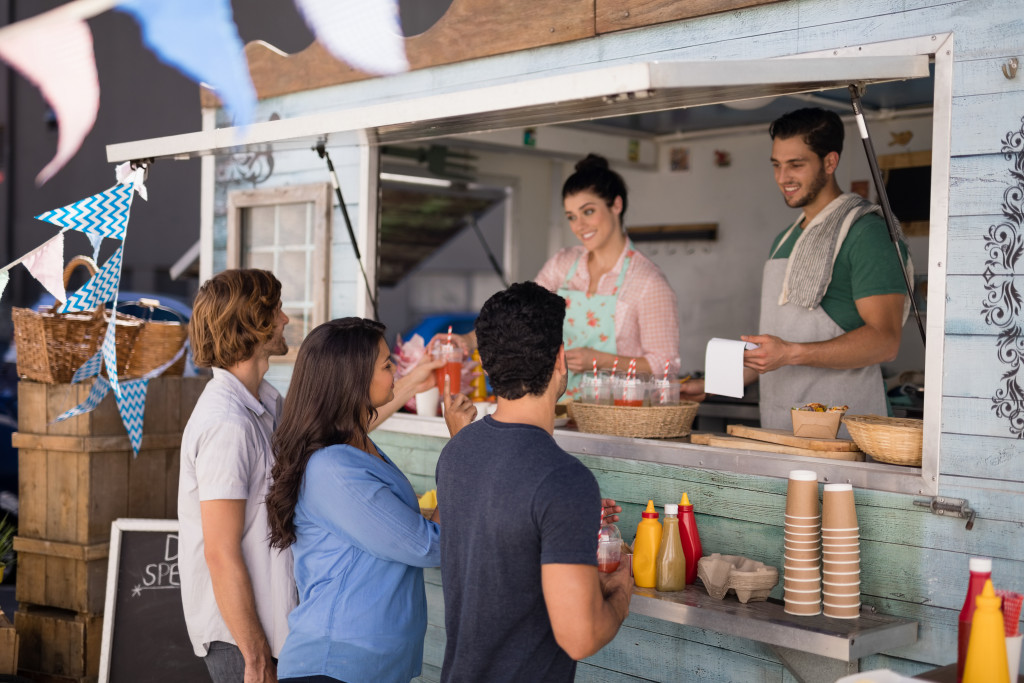- Plan your menu considering pricing, portability, and accessibility for maximum profitability and customer satisfaction.
- Obtain all required licenses and permits to legally operate your moving food stall.
- Invest in high-quality equipment like food steamers, countertop grills, and toasters to ensure food quality.
- Remember, a successful moving food stall requires careful planning, legal compliance, quality equipment, and effective marketing.
Are you passionate about food and want to share your love of cuisine with others? Do you like the idea of owning a small business and being your own boss? If you answered “yes” to either of those questions, then a moving food stall might be the perfect opportunity for you. However, before you can start operating your own food stall, there are a few things you need to do first. This blog post will cover everything you’d need before starting a moving food stall in your city.
Plan Your Menu
The first thing you need to do is to decide what kinds of food you want to sell. This should be based on your culinary expertise as well as your target audience. You don’t want to be selling food that nobody wants to eat. Research which dishes are prevalent in your area and try to put your own spin on them. Here are other things that you should take into account:
Pricing
Your pricing strategy is crucial in determining your food stall’s profitability. You need to balance it in a way that covers your overhead costs and at the same time, it’s reasonable and attractive enough for your customers.
Consider the cost of ingredients, preparation time, operational costs, and market competition when setting your prices. Remember, it’s not always about being the cheapest option; it’s about providing value for money.
Portability
The heart of a moving food stall is its ability to be mobile and bring food to the customers. Therefore, your menu items should be easy to transport without compromising their quality. Consider dishes that maintain their taste and integrity even after being transported from one place to another.
Additionally, they should be easy to eat on the go, as most of your customers might not have a place to sit and dine. Think of handheld foods like burgers, sandwiches, or wraps and foods that can be served in portable containers.
Accessibility
In terms of accessibility, consider how easy it is for customers to find and purchase your food. For example, will you have a brick-and-mortar location where people can visit, or will you be a fully mobile operation that sets up shop in various locations throughout the city? If you’re going mobile, you’ll need to have a robust social media presence or a reliable method of communicating your whereabouts to your customers.

Get the Required Licenses and Permits
Before you can start selling food to the public, you’ll need to get specific licenses and permits from your local government. The process can be pretty daunting, but it’s crucial that you follow all the necessary steps to avoid any legal issues down the line.
Some of the licenses and permits you’ll need include a food handler’s license, a business license, and a health permit. In addition, you might also need to obtain a vendor’s license or any other permits related to the area where you’ll be operating your food stall.
Furthermore, you’ll need to purchase any necessary insurance coverage for your business. This includes liability insurance and workers’ compensation, if applicable.

Invest in Quality Equipment
The equipment you use will significantly affect the quality of the food you serve. Ensure you have a reliable cooking and storage unit that can handle different types of foods. Also, consider the logistics of transporting food and equipment when setting up your moving stall. Here are other pieces of equipment to invest in:
Food Steamer
A high-quality commercial food steamer is an essential piece of equipment for a moving food stall. This versatile appliance allows you to cook a variety of dishes, from steamed vegetables and dumplings to chicken, fish, and even rice.
It ensures that your food retains its nutrients, color, and flavor, enhancing the overall dining experience for your customers. Furthermore, food steamers are designed for fast and efficient cooking, which is crucial for a food stall where quick service is a must.
Countertop Grills
Countertop grills are another vital investment for your moving food stall. Whether you’re making burgers, sandwiches, or any grilled delicacies, you need a reliable and efficient grill. These compact units take up little space, but they pack a punch when it comes to performance.
They allow you to cook food evenly and quickly, which is critical to maintaining good customer service and a high-quality product. When choosing a grill, consider its size, power, durability, and ease of cleaning.
Toasters
Toasters are a vital piece of equipment for a moving food stall, especially for breakfast service or serving dishes like sandwiches, bagels, and other toasted goods. A commercial-grade toaster ensures consistent toasting quality, which can elevate the taste and texture of your words.
When selecting a toaster, consider factors like its capacity, speed, ease of use, and durability. Look for a model that can handle the demands of your operation, withstand frequent use, and be easily transported without damage.
Starting a moving food stall can be a fun and rewarding venture if you do it right. Plan your menu ahead of time, apply for the necessary licenses and permits, invest in quality equipment, find the right location, and market your business effectively. Once you have everything set up, you can start serving delicious food to your customers and establishing your spot in the foodie scene. Remember to have fun and be creative along the way.




